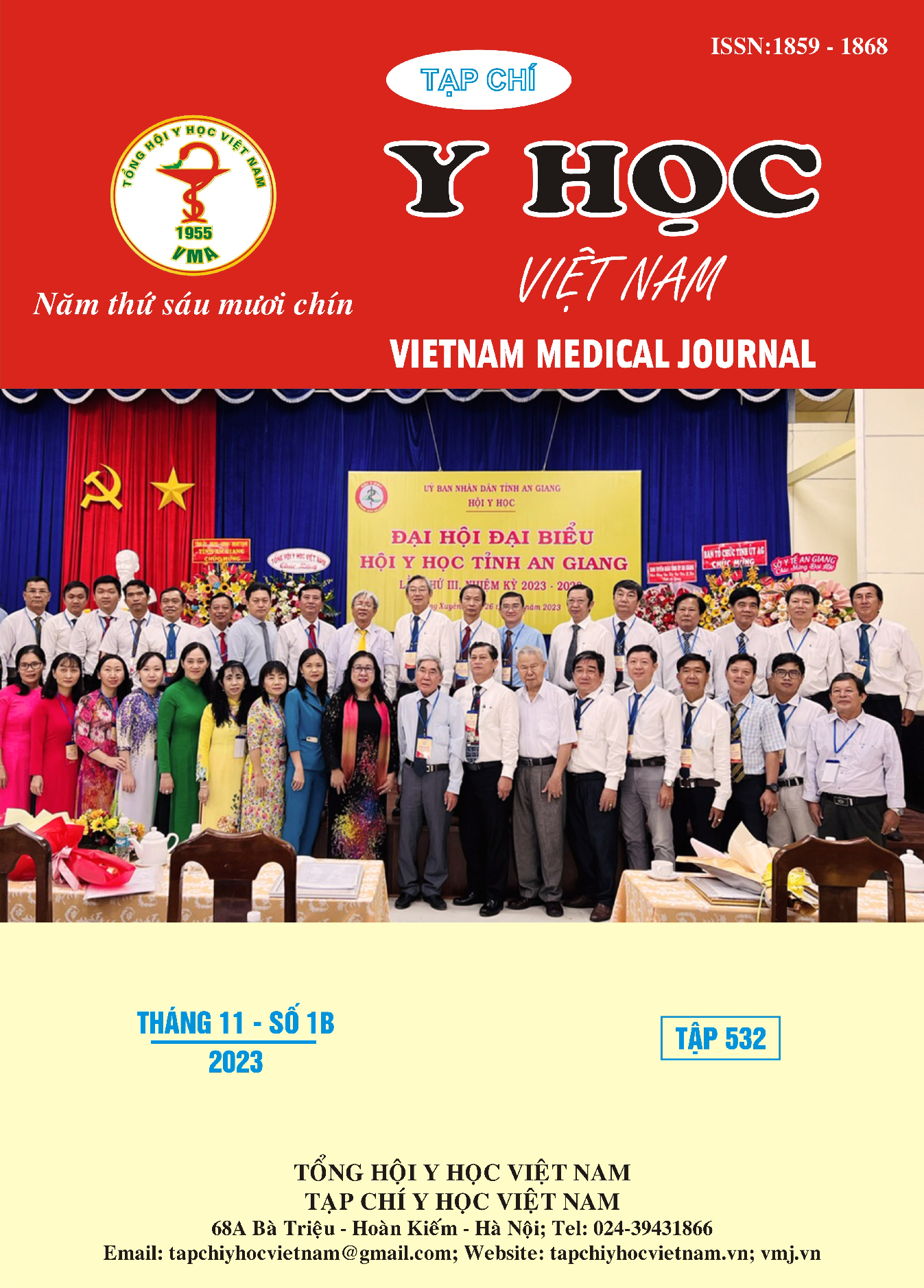THE RESULTS OF EMBRYO DEVELOPMENT FROM VITRIFIED OOCYTE
Main Article Content
Abstract
Objectives: To evaluate the embryo formation of vitrified oocyte. Methods: A retropective study was conducted at IVF center of Hanoi medical univerversity Hospital from June 2021 to June 2023 in patients who had vitrifed – thawed oocyte. The study evaluate the survival rate of oocyte vitrification, fertilization rate, embryo formation rate and the number of embryo day 2. Results: A total of 323 vitrified oocyte from 75 patients was warmed. The surviaval rate, fertilization rate, and embryo formation rate of frozen oocytes were 90.45%, 80.13% and 70.49%, respectively. The average number of embryo day 2 was 2.92 ± 2.39. Conclusions: The results of this study initially showed that oocyte vitrification was effective in in-vitro fertilization.
Article Details
Keywords
oocyte cryopreservation, vitrification
References
2. Chen C. Pregnancy after human oocyte cryopreservation. Lancet. 1986 Apr 19;1(8486):884–6.
3. Cobo A, Garrido N, Crespo J, José R, Pellicer A. Accumulation of oocytes: a new strategy for managing low-responder patients. Reprod Biomed Online. 2012 Apr;24(4):424–32.
4. Practice Committees of the American Society for Reproductive Medicine and the Society for Assisted Reproductive Technology. Mature oocyte cryopreservation: a guideline. Fertil Steril. 2013 Jan;99(1):37–43.
5. Walker Z, Lanes A, Ginsburg E. Oocyte cryopreservation review: outcomes of medical oocyte cryopreservation and planned oocyte cryopreservation. Reprod Biol Endocrinol. 2022 Jan 7;20:10.
6. Ethics Committee of the American Society for Reproductive Medicine. Electronic address: ASRM@asrm.org. Fertility preservation and reproduction in patients facing gonadotoxic therapies: an Ethics Committee opinion. Fertil Steril. 2018 Aug;110(3):380–6.
7. Lee KS, Lin MH, Hwu YM, Yang JH, Lee RKK. The live birth rate of vitrified oocyte accumulation for managing diminished ovarian reserve: a retrospective cohort study. Journal of Ovarian Research. 2023 Mar 3;16(1):49.
8. Cobo A, Meseguer M, Zulategui J, Crespo J, Pellicer A, Remohi J. Advanced maternal age is negatively affecting survival and clinical outcome of vitrified oocytes. Fertility and Sterility. 2008 Sep;90:S279.
9. Buderatska N, Gontar J, Ilyin I, Lavrinenko S, Petrushko M, Yurchuk T. Does human oocyte cryopreservation affect equally on embryo chromosome aneuploidy? Cryobiology. 2020 Apr;93:33–6.
10. Melado L, Arnanz A, Bayram A, Elkhatib I, De Munck N, Navarro AT, et al. Anti-Müllerian hormone is an independent marker for oocyte survival after vitrification. Reprod Biomed Online. 2020 Jul;41(1):119–27.


